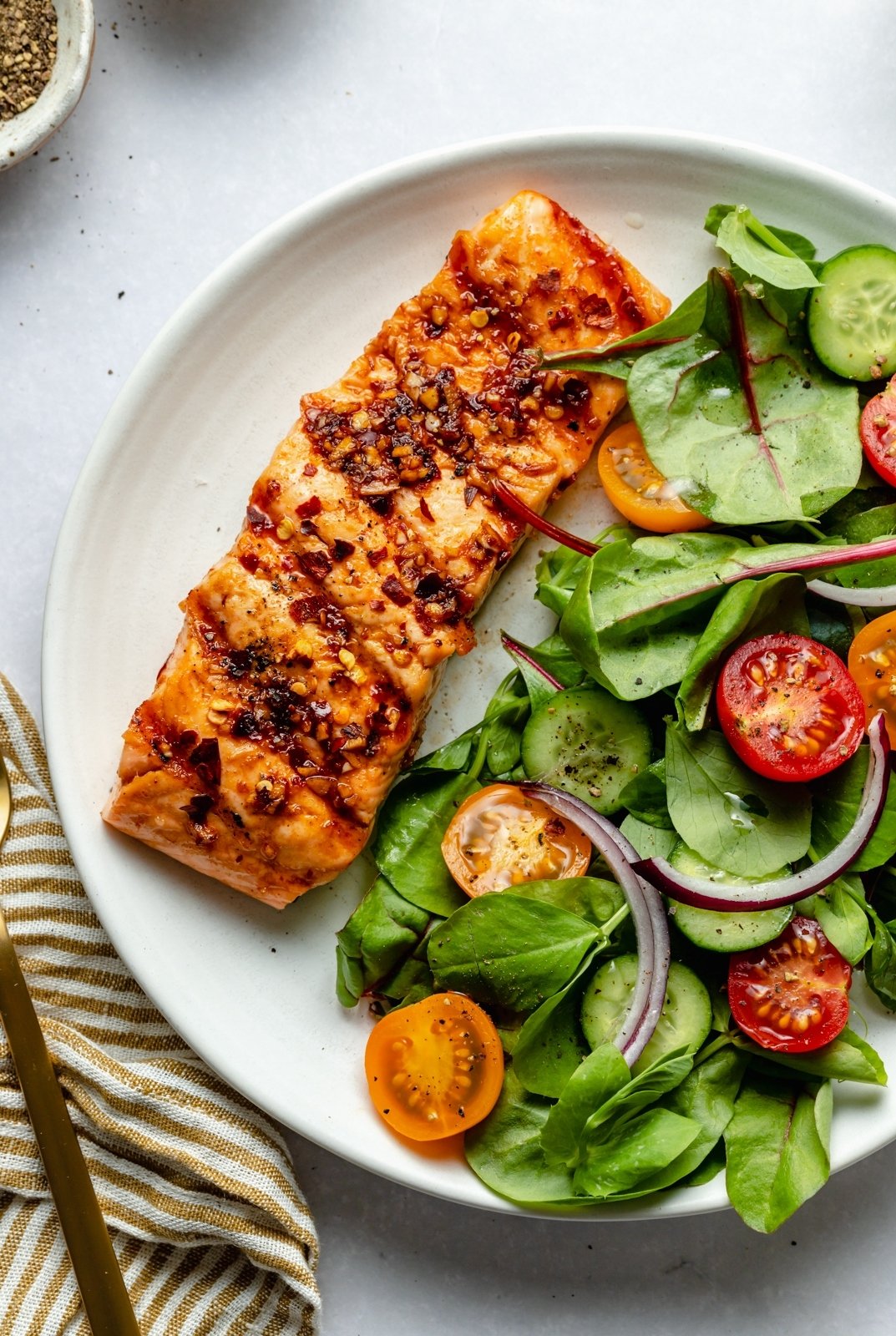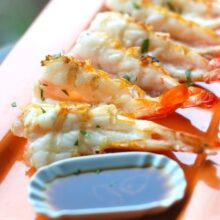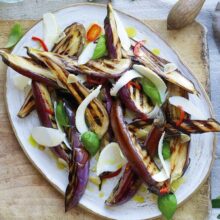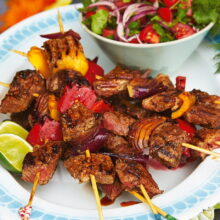Grilling Salmon on a Gas Grill

Grilling salmon is a quick, easy way to make a healthy dinner. It’s important to use a digital meat thermometer to ensure that the fish is cooked all the way through. You’ll know the salmon is done when it flakes easily with a fork and turns opaque.
I recommend using wild salmon over farm-raised as it has more flavor, but that’s up to you!
Time
Unlike most fish, salmon is well-suited to high heat grilling. It cooks quickly and is easily flipped without breaking apart. Choose individual-sized salmon fillets (typically 6 or 8 ounces per person). Look for skin-on fillets as they will be more flavorful and cook more evenly. The skin will also protect the salmon from drying out on the grill grates and it’s easy to remove afterward if you don’t want to eat it.
Ideally, your salmon should be marinated before you grill it. A simple marinade of fat, acid, salt and aromatics can add a big boost of flavor and moisture to your fish.
You can tell your salmon is cooked when the flesh turns opaque and flakes easily with a fork. However, it’s more accurate to test its internal temperature using a digital meat thermometer. When a digital thermometer inserted into the thickest part of your salmon reads 140 degrees F, it’s ready to be removed from the grill and served.
Temperature
When grilling salmon, it’s important to cook it until it’s done. Using a meat thermometer will help ensure that your fish is cooked through. The ideal internal temperature for salmon is 130 to 135 degrees Fahrenheit. The salmon will continue to cook while it rests after being removed from the heat.
The most common way to determine when salmon is ready is by texture: it should flake easily with a fork and be an opaque pink color. You can also use an instant-read meat thermometer to check the internal temperature.
If your grill grates are seasoned well, you may not need to flip salmon during the grilling process. If you do need to flip the fish, place the fillet skin-side down and only turn it once when it is lightly browned and releases easily from the grill grates with a spatula. Salmon that is left skin-on tends to stick less to the grill because the skin acts as a barrier between the grill and the flesh.
Aluminum Foil
Grilling salmon in foil helps to seal in moisture and flavor. The foil also makes it easier to flip and prevents the fillet from falling apart. I recommend using a heavy-duty aluminum foil that has been pre-treated with a non-stick coating.
Salmon is a delicate fish and needs to be handled with care. It’s important to use high heat, but not so hot that the salmon is burned or overcooked. If you’re concerned about overcooking, invest in an instant-read meat thermometer to ensure your salmon is properly cooked.
Use your favorite marinade or seasoning to create a flavorful base for your grilled salmon. For example, try a combination of lemon juice and citrus (like lemon or lime), with fresh herbs like parsley and dill. For a finishing touch, drizzle on some melted butter. You can choose from dairy or sugar free butter, depending on your diet and preferences. Then, top with your citrus slices and enjoy!
Recipes
When grilling salmon, start with a preheated grill and a well-greased surface to prevent sticking. Drizzle or brush both sides of the fillets with olive oil and sprinkle with seasonings before placing them on the grill skin side down (photos 1-2). Cook until the skin crisps and the fish is fully cooked, 6 to 8 minutes depending on the thickness.
Choose a skin-on salmon because it adds flavor and helps the fish stay together on the grill. A wide metal spatula can be used to easily flip the fish. For a more interesting flavor, try adding a small amount of brown sugar to the marinade before cooking. If you don’t want to take the time to make a marinade, simply coat the fish with oil and season it with salt and pepper. Remember, salmon cooks very quickly, so remove it from the heat when it becomes opaque and an instant-read thermometer inserted into the thickest part reads 130 to 140 degrees F for medium rare.
Did you miss our previous article…
https://notoriousbob.net/?p=3554



